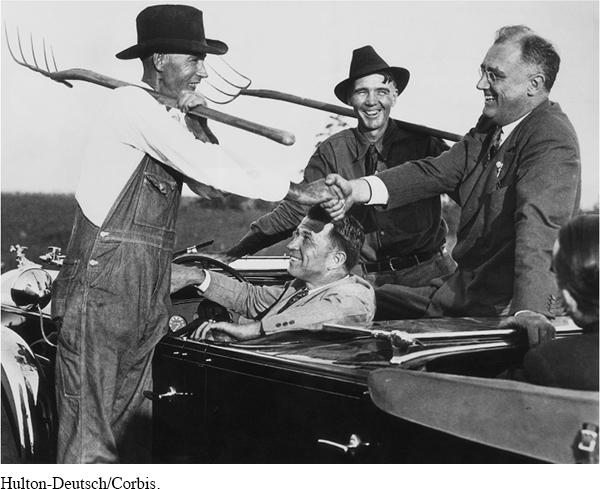The American Promise: Printed Page 681
The American Promise, Value Edition: Printed Page 622
The American Promise: A Concise History: Printed Page 708
The Making of a Politician
Born in 1882, Franklin Delano Roosevelt grew up on his father’s leafy estate at Hyde Park on the Hudson River, north of New York City. Roosevelt prepared for a career in politics, hoping to follow in the political footsteps of his fifth cousin, Theodore Roosevelt. In 1905 Franklin married his distant cousin, Eleanor Roosevelt, and Theodore Roosevelt—
In the summer of 1921, at the age of thirty-
After his polio attack, Roosevelt frequented a polio therapy facility at Warm Springs, Georgia. There, he got to know southern Democrats, which helped make him a rare political creature: a New Yorker from the Democratic Party’s urban and immigrant wing who got along with whites from the party’s entrenched southern wing.
The American Promise: Printed Page 681
The American Promise, Value Edition: Printed Page 622
The American Promise: A Concise History: Printed Page 708
Page 682By 1928, Roosevelt had recovered sufficiently to campaign for governor of New York, and he squeaked out a victory. As governor of the nation’s most populous state, Roosevelt showcased his activist policies, which became a dress rehearsal for his presidency.
As the Great Depression spread hard times throughout the nation, Governor Roosevelt believed that government should intervene to protect citizens from economic hardships rather than wait for the law of supply and demand to improve the economy. According to the laissez-

To his supporters, Roosevelt seemed to be a leader determined to attack the economic crisis without deviating from democracy—